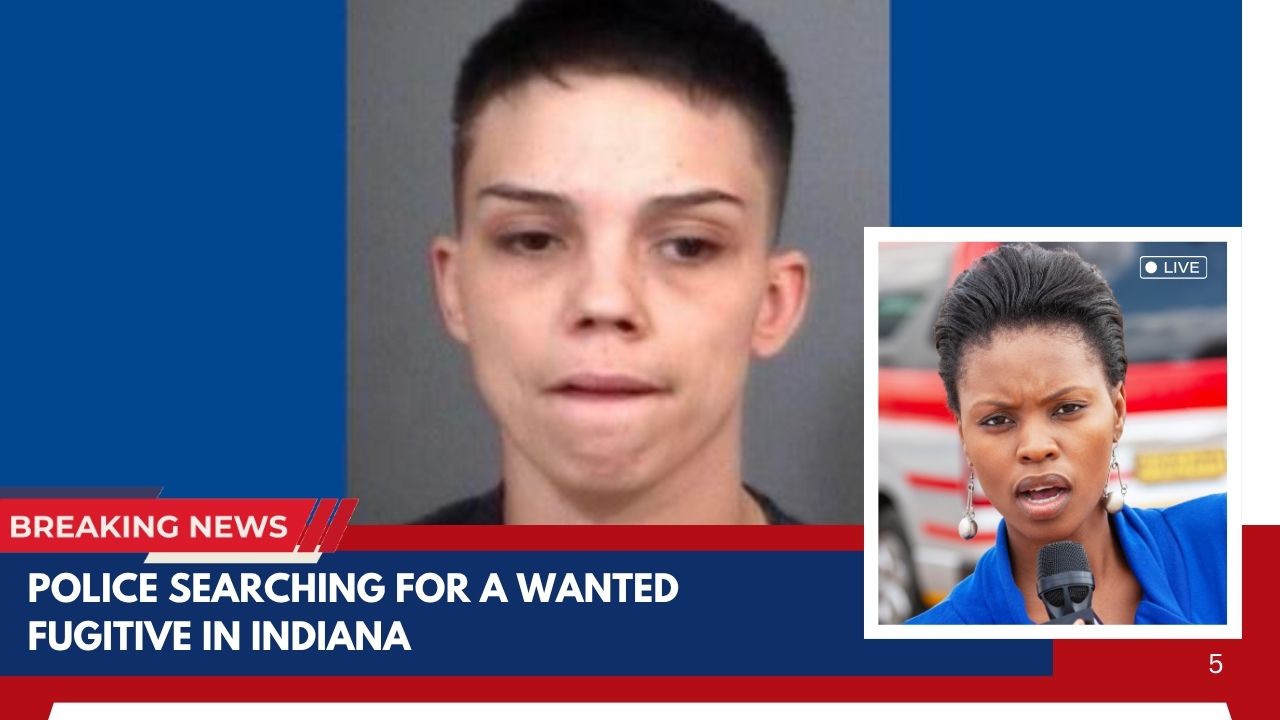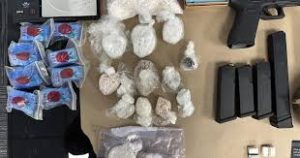Every city holds its own stories of triumph, struggle, and, sometimes, high-stakes drama. In Indiana, these stories often unfold not only in the quiet neighborhoods of Indianapolis, Gary, or Fort Wayne, but sometimes along the country roads of Bloomington, South Bend, and Evansville, where law enforcement races against time to capture elusive fugitives. In 2025, Indiana police are once again embroiled in an intense manhunt—a search that underscores the formidable challenges of apprehending fugitives and the importance of community vigilance.
This in-depth article explores the ongoing search for a wanted fugitive in Indiana, weaving together real law enforcement procedures, notable fugitive cases, city-specific facts, statistics, and the wider impact of such pursuits on local communities. By examining recent events alongside the realities faced by police and citizens, we offer an unvarnished look into the world of modern fugitive investigations in Indiana.
The Backdrop: Crime in Indiana’s Cities
Crime Trends and Key Statistics
Indiana, with a population of about 6.8 million, spans vibrant urban centers, sprawling suburbs, and vast rural areas. Its largest city, Indianapolis, is home to more than 880,000 people and wrestles with crime rates that mirror the struggles of other major Midwestern cities. In the past year, the state recorded over 176,000 index crimes, including homicide, robbery, aggravated assault, and burglary.
Indianapolis and Gary consistently grapple with higher violent crime rates per 100,000 residents compared to smaller cities such as Carmel or Fishers. In 2024, Indianapolis reported nearly 239 homicides—a drop from previous years, but still a cause for concern, prompting citywide task forces and new investments in police technology.
However, crime in Indiana isn’t contained to its urban core. Smaller cities like Evansville and rural county hubs such as Kokomo and Martinsville also experience criminal activity, often involving drug trafficking, armed robberies, and, more rarely, high-profile fugitives on the run.
The Fugitive Search: A Timeline and Process
How Manhunts Begin
A fugitive search in Indiana typically begins when a suspect—wanted for crimes ranging from murder to serious assault or parole violations—eludes capture or escapes custody.
In 2025, a dramatic fugitive case unfolded when a suspect escaped from the Adult Detention Center in Indianapolis. The individual, wanted for murder in Minneapolis, was mistakenly released due to a clerical error. By the time authorities realized the mistake, the fugitive had already left Marion County, prompting a multi-city, multi-state manhunt stretching from Indianapolis to St. Paul, Minnesota.
Key Stages of a Manhunt
Indiana police departments coordinate with federal agencies, including the U.S. Marshals Service and the FBI, to expand their search radius. The steps typically include:
-
Immediate Area Search: Police cordon off neighborhoods near the last known sighting, canvassing door to door in cities like Bloomington or Anderson.
-
Public Alerts: Authorities leverage social media, television, and emergency notification systems to alert residents in affected areas, from South Bend down to New Albany.
-
Interagency Collaboration: The Indiana State Police and local sheriffs work closely with federal agencies, sharing intelligence and leads.
-
Technology and Surveillance: License plate readers, phone pings, and CCTV footage (especially in cities like Lafayette or Evansville) provide valuable digital breadcrumbs.
-
Reward Offers: Authorities often offer rewards for tips leading to capture, incentivizing community participation.
Notable Recent Fugitive Cases in Indiana
Case Study: The Kevin Mason Manhunt in Indianapolis
One of Indiana’s most recent and widely publicized manhunts involved Kevin Mason. Arrested on September 11th for a murder committed in Minneapolis, Mason was accidentally released from the Adult Detention Center in Indianapolis just two days later due to a records error. The subsequent manhunt revealed the complexity and urgency such cases present.
Mason’s escape sparked a two-week search stretching from Indianapolis to multiple states. His girlfriend, who assisted him by purchasing essential supplies and a burner phone, was tracked and arrested. Mason was eventually captured in St. Paul, Minnesota after extensive surveillance, coordination between local and federal authorities, and covert tracking. The case highlights several key themes: the fluidity of fugitive movement, the vital role of law enforcement partnerships, and the necessity for meticulous administrative processes in detention centers.
Other High-Profile Cases
-
Alejandro Vargas-Rodriguez: Listed among the U.S. Marshals’ most wanted fugitives, Vargas-Rodriguez is wanted in the Northern District of Indiana. He has managed to evade capture despite extensive searches, illustrating the difficulty of tracking fugitives across varied terrain and communities.
-
Antonio Raemone Lewis: In early 2025, police in Hammond, Indiana launched a manhunt for Lewis, wanted on serious felony charges. Sighted as far as Tangipahoa Parish in Louisiana, the search demonstrated how fugitives can cross state lines and avoid detection by moving quickly and changing locations.
-
Cases with Tragic Endings: In one tragic incident, a former Alabama corrections officer helped an inmate escape. Their flight ended in Evansville, Indiana, after a dramatic chase concluded with the officer’s suicide. Such cases display the unpredictable and sometimes violent nature of fugitive searches.
How Indiana Police Coordinate Fugitives Searches
The Role of the U.S. Marshals and FBI
Indiana’s police forces, particularly in cities like Indianapolis, Fort Wayne, and South Bend, rely heavily on partnerships with federal law enforcement agencies. The U.S. Marshals Service maintains fugitive task forces in major regions, combining local knowledge (such as the distinct neighborhoods of Gary or Hammond) with federal resources.
-
Task Force Operations: These task forces use advanced forensics, data analysis, and even facial recognition to locate fugitives. Operations often begin in one city—such as Indianapolis—and quickly spread to others as real-time information emerges.
-
Cross-State Coordination: Indiana’s location—bordering Illinois, Kentucky, and Ohio—means fugitives frequently cross state lines. Police must coordinate seamlessly with out-of-state agencies to prevent suspects from disappearing further.
Technology-Driven Policing
The rise of surveillance technology has changed the game. Mobile command centers, drones, and instant access to traffic camera networks mean that even in sprawling rural areas outside of Terre Haute or Elkhart, the chances of capturing a fugitive have increased.
License plate readers in places like Lebanon and Brownsburg feed live data to fugitive apprehension teams, flagging suspicious vehicles or confirming tips from the public. Social media also amplifies police reach; a Facebook post about a wanted fugitive can reach thousands across Hamilton County in minutes, resulting in valuable tips.
The Community Impact of Manhunts
Life in a City Under Alert
When police issue alerts for wanted fugitives, the daily lives of Indiana residents shift. Schools in cities like Muncie or Kokomo may go into lockdown, businesses adjust closing times, and families choose to stay indoors after dark.
Community watch organizations become more active, especially in areas such as Greenwood or Schererville, distributing information about what to look for and how to report suspicious activity. Neighborhood Facebook groups and Nextdoor forums light up with updates and calls for vigilance.
In rural communities near the Ohio River or on the outskirts of Terre Haute, residents are sometimes enlisted to check barns and outbuildings for possible hiding suspects. The sense of shared responsibility deepens, but so too does the anxiety that comes with a manhunt close to home.
The Psychological Toll
Though most searches end without violence, the specter of a fugitive on the loose can cause stress and fear, especially in smaller cities where such events are rare. Police departments strive to communicate frequently and clearly to reduce panic and provide actionable advice.
Schools and workplaces in affected towns may offer counseling resources during and after high-profile cases, recognizing the strain on young people and employees alike.
Success Stories and Lessons Learned
Apprehensions and Outcomes
Despite high-profile exceptions, Indiana police successfully capture most fugitives. In 2024 alone, the state logged over 620 fugitive apprehensions, thanks in large part to fast information sharing, modern technology, and supportive communities.
Cases like that of Kevin Mason demonstrate law enforcement’s ability to learn from mistakes, close administrative gaps, and, through teamwork, bring fugitives to justice without major harm to bystanders.
Ongoing Improvements
Incidents involving mistaken releases have prompted administrative overhauls in county jails and improved training for staff. In cities such as Evansville and Gary, investment in security protocols ensures fewer opportunities for similar mistakes.
Meanwhile, collaborations between local police, community leaders, and technology companies aim to improve tip submission processes and speed up response times during future manhunts.
How You Can Help: Citizens and Crime Stoppers
The Power of Community Tips
Fugitive searches are rarely solved by police alone. Many of Indiana’s recent captures began with an alert citizen who spotted a suspicious vehicle in Carmel or a keen-eyed clerk in a Bloomington gas station.
Actionable steps for citizens:
-
Stay updated on local police bulletins and social media posts.
-
Report suspicious activity (such as abandoned vehicles or out-of-place strangers) immediately.
-
Respect law enforcement boundaries: never approach a wanted person.
Crime Stoppers and Rewards
Indiana’s Crime Stoppers programs offer anonymous tip lines and reward funds. In 2024, more than $250,000 in rewards was paid for information leading to arrests, including several high-profile fugitive cases. Citizens are encouraged to contact local Crime Stoppers chapters in their city or county if they have information that can assist investigations.
The Broader Picture: Balancing Safety and Civil Liberties
Modern fugitive searches in Indiana walk a careful line between public safety and civil liberties. While police efforts are mostly focused on ensuring that dangerous individuals are swiftly apprehended, departments are also keenly aware of the need to avoid unnecessary intrusions into citizens’ private lives.
Clear communication, transparency about procedures, and strict adherence to constitutional rights remain essential. As technology advances, these principles are tested, but Indiana’s law enforcement agencies have made it a point to build trust with communities—whether in bustling Indianapolis or in quieter towns like Bedford.
Conclusion
The search for a wanted fugitive in Indiana is a window into the realities faced by law enforcement and communities alike. Across urban neighborhoods in Fort Wayne and Evansville, through the college towns of Bloomington and the farmlands near Lafayette, this race against time brings out the best in police teamwork, citizen vigilance, and, occasionally, exposes the cracks in systems that must be constantly improved.
Successes are celebrated, lessons are learned, and everyday life soon returns to normal. But each manhunt leaves a lasting impression—a reminder of the enduring partnership between police and the people of Indiana, united by a common goal: safety, justice, and the well-being of every city and every citizen in the Hoosier state.





